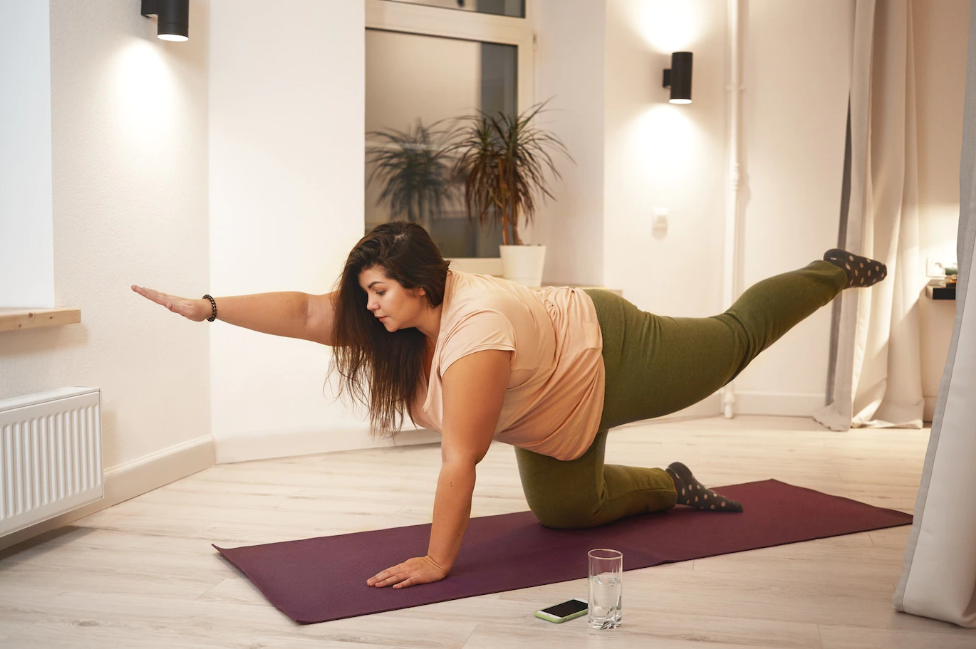Self Care Things To Do
Learn how mindfulness involves being aware of your thoughts, feelings, and physical sensations as a form of self care.

Selfpause Affirmation App
Download the app to get 1,000’s of affirmation meditations and everything you need to write, record and listen to your own.
Practicing mindfulness as part of self care involves paying attention to your thoughts, feelings, and physical sensations in the present moment. The goal is to balance energy, reduce stress, and encourage a sense of well-being. Some people find that it is helpful to name their thoughts and feelings.
Mindfulness as part of self care is growing in popularity as a cornerstone of everyday living. There are a number of ways to incorporate mindfulness into your daily life. For example, you can try to be more aware of your breathing or try to become more present while walking. It’s also possible to use mobile applications or websites to teach mindfulness.
Research is still in its early stages, but there are a number of studies that indicate the benefits of mindfulness. Practicing mindfulness can help you reduce stress and anxiety. It can also help you to become more present and able to respond to life with greater wisdom.
Practicing mindfulness can be very difficult at first. You may find that your thoughts get distracted and you may find it hard to focus. However, persistence is important. It can be useful to set aside a regular time for mindfulness. It can also be useful to do guided meditations.
One study found that a comprehensive mindfulness training program may help people to improve their sense of accomplishment, depersonalization, and emotional exhaustion. In addition, it may help people to reduce burnout.
In addition, a number of studies have shown that mindfulness can benefit health care professionals. Some researchers have found that health care providers who practice mindfulness as part of self care are better able to communicate with patients and improve patient satisfaction scores.
Exercise

Increasingly, the fitness industry is focusing on making exercise a part of self care. Rather than focus on one specific exercise, fitness studios are now offering multiple activities that work different muscle groups and keep people interested.
Exercise has many physical and mental benefits. It can help you to calm your nerves, reduce muscle tension, and boost your energy levels. Exercise also helps to release feel-good neurotransmitters in your brain, such as endorphins.
Exercise can also help you to find mindfulness. When you are tense and stressed out, exercise can help you to focus on your breathing and relax. This relaxation technique is known as diaphragmatic breathing, and it can help you to deliver maximum oxygen to your body.
Other relaxation techniques include progressive muscle relaxation, visual imagery, and massage. They help to lower stress, and can also improve your sleep.
Exercise can also increase your sense of control over your body. It can give you the ability to manage health problems without relying on medications or other treatment options. It can also help to relieve symptoms of depression and anxiety.
Exercise can also reduce stress and protect your cardiovascular system from harmful effects of stress. This means you can reduce your risk of heart disease, diabetes, and cancer.
Regular exercise can also help you to maintain a healthy weight. It also can increase your energy level, which means you’ll have more energy to devote to your family.
There are many other benefits of exercise. You can also boost your self-esteem and self-confidence, improve your coping ability, and improve your mental health. Exercise can also give you the chance to try new things and experience new experiences.
Workout classes

Whether you’re a fan of yoga or cardio, exercise is an important self-care activity. But it’s important to keep in mind that you should be aware of your body’s cues when you’re working out. You don’t want to push yourself to the brink of exhaustion. And stretching after a workout is a must!
There are many self-care workout classes on the market today. Many of these are offered online. These classes are perfect for people who can’t get to a physical class or for people who travel. There are even outdoor adventure groups available.
For example, the Black and Brown Women Self-Care Series is a great way to incorporate both physical and emotional health into your life. These classes include a daily self-care routine, a daily gratitude list, and a self-made toolkit. They also feature a guided meditation and a guided breathing routine.
You might not have heard of the Black and Brown Women Self-Care Series. However, it’s a great way to find out what’s new in the world of self-care. For example, there’s a 10-day Self-Care Challenge designed by Sarah Stark, a self-care expert. This is a great way to learn something new each day, while also learning about what’s important to you.
Other self-care workouts include acupuncture, cryotherapy, and cupping. Acupuncture can help reduce headaches and joint pain, while cryotherapy can reduce swelling and inflammation. Lastly, cupping is a bit of a buzzword right now. It’s a practice that’s used to treat tissue, but it’s also a great way to stimulate circulation.
If you’re looking for the best self-care workouts, you might want to look beyond your local gym or studio. Try some of the online options below.
Writing self care journal

Whether you are dealing with depression or anxiety, writing about the bad parts of the day in your self care journal can help you gain a new perspective. It can help you clear your mind, untangle your thoughts, and reboot your motivation. Aside from helping you manage your emotions, journaling can also improve your memory and help you de-stress. You can keep a journal for as little as 15 minutes a day, or as long as you want. Here are some ways to make it a habit.
First, create a list of things that you enjoy. This could be a list of your favorite foods, smells, or activities. You could also create a list of things that you find stress you out or that you want to try. You could also create a list of things that you are inspired by, like a new healthy recipe or list of things you are grateful for. Creating this list of things can help you be a go-to source of inspiration for your self care journal.
Next, write about how you are dealing with pain. Pain is something we all have to deal with at some point, but how we deal with it can make all the difference in our lives. You can also write about how you can change things to help you deal with your pain.
Taking a New York City self-care trip

Taking a New York City self-care trip is a fantastic way to unwind and recharge your batteries. If you’re traveling with friends or family, consider squeezing in some one-on-one time to rejuvenate. This is especially true if you’re trying to maintain a healthy balance between your work and personal life.
The best part is, it’s not hard to get started. All you need are a few free tools and a bit of imagination. You can even download a free printable travel planner to help you stay organized and in the know. If you’re planning on a self-care trip, you may as well make sure you’re prepared for the journey. After all, you don’t want to be left out of the fun.
Self-care is about more than just pampering yourself. Taking a self-care trip can also mean avoiding a few trips to the doctor’s office and fewer sick days. If you are looking to improve your health and wellness, try out some of the following self-care tips to make sure you’re getting the most out of your New York City trip. Some of these tips may be a little obvious, but implementing them can mean the difference between a fun time and a miserable one.
Our Top FAQ's
Some simple self-care activities that can be incorporated into a daily routine include:
- Taking breaks to rest and relax
- Engaging in physical activity or exercise
- Eating a healthy and balanced diet
- Getting enough sleep
- Taking time to do something enjoyable, such as hobbies or leisure activities
- Practicing mindfulness or meditation
To prioritize self-care when faced with a busy schedule or overwhelming responsibilities, it may be helpful to:
- Identify and prioritize your own needs and well-being
- Set boundaries and communicate your needs to others
- Delegate tasks or responsibilities as needed
- Plan ahead and schedule self-care activities into your schedule
- Practice time management and organization skills
To set boundaries and communicate needs related to self-care with friends and loved ones, it may be helpful to:
- Clearly and assertively communicate your needs and boundaries to others
- Stand up for yourself and your well-being
- Seek support from trusted friends or loved ones when needed
- Set limits on your time and energy, and say no to requests or demands that are not aligned with your well-being
Some self-care strategies for managing stress and anxiety include:
- Engaging in physical activity or exercise
- Practicing mindfulness or meditation
- Seeking support from trusted friends or loved ones
- Seeking professional help, such as therapy or counseling
- Incorporating stress-reducing activities into your daily routine, such as deep breathing or progressive muscle relaxation
- Seeking out relaxation techniques, such as yoga or tai chi
Self-care can be used as a tool for personal growth and self-improvement by:
- Prioritizing your own well-being and needs
- Engaging in activities that support your physical, mental, and emotional health
- Practicing self-reflection and self-awareness
- Seeking out opportunities for learning and personal development
- Setting goals and working towards them in a way that is mindful and self-compassionate.
